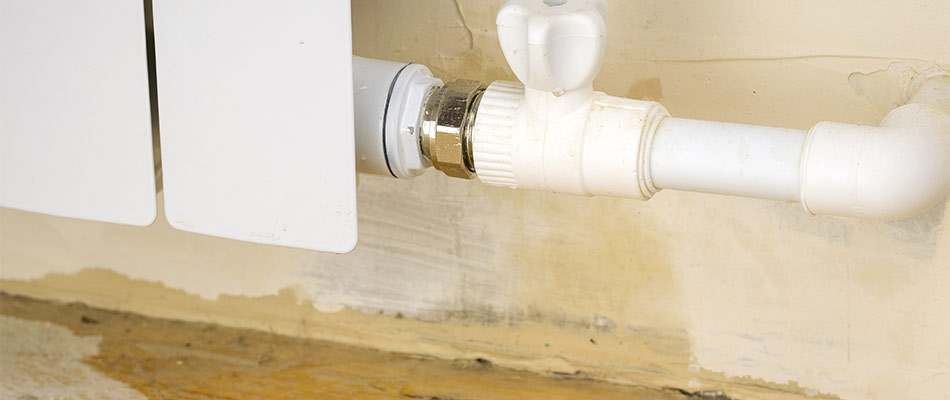6 Ways to Locate Concealed Water Leakages in Your Residence
6 Ways to Locate Concealed Water Leakages in Your Residence
Blog Article
Just how do you really feel in relation to Leaking water lines?

Early discovery of leaking water lines can mitigate a prospective calamity. Apart from saving you money, it will minimize the worry and also frustration. The minute you find a leak, calling your plumber for repair work is the best remedy. Nevertheless, some tiny water leakages might not show up. If you can not find it with your nude eyes, below are some hacks that aid.
1. Analyze the Water Meter
Examining it is a surefire method that assists you uncover leaks. If it moves, that suggests a fast-moving leakage. This means you might have a sluggish leakage that could even be below ground.
2. Inspect Water Intake
If you identify unexpected adjustments, regardless of your usage being the same, it indicates that you have leakages in your plumbing system. An abrupt spike in your costs suggests a fast-moving leak.
A steady boost every month, also with the same routines, shows you have a sluggish leakage that's additionally gradually escalating. Call a plumber to completely inspect your residential or commercial property, particularly if you really feel a warm area on your floor with piping beneath.
3. Do a Food Coloring Test
30% comes from toilets when it comes to water intake. Test to see if they are running correctly. Drop flecks of food shade in the container and wait 10 mins. There's a leakage in between the tank and also dish if the shade in some way infiltrates your dish during that time without flushing.
4. Asses Outside Lines
Do not forget to inspect your outside water lines also. Test faucets by attaching a garden hose pipe. Must water seep out of the connection, you have a loosened rubber gasket. Replace this and also make certain all links are limited. It will aid get it properly took a look at and maintained each year if you have actually got a lawn sprinkler system. One little leak can lose lots of water and also surge your water costs.
5. Analyze the scenario as well as inspect
Homeowners should make it a routine to inspect under the sink counters and also also inside cabinets for any type of bad odor or mold and mildew development. These 2 red flags indicate a leakage so punctual attention is required. Doing routine evaluations, even bi-annually, can save you from a significant trouble.
Check for discolorations and compromising as a lot of pipelines and also devices have a life span. If you think dripping water lines in your plumbing system, do not wait for it to intensify.
Early discovery of leaking water lines can mitigate a prospective disaster. Some tiny water leaks might not be noticeable. Examining it is a surefire way that assists you uncover leaks. One small leak can squander heaps of water as well as surge your water expense.
If you think dripping water lines in your plumbing system, do not wait for it to intensify.
How to Know If Your Home Has a Hidden Leak
Water Meter Reveals Inexplicable Water Usage
If you’d like to test whether or not there’s a leak somewhere in your home, you can do this using your water meter. Here is how to conduct the test:
Don’t use any water in your home for at least 30 minutes; this also means not turning on faucets or water-using appliances.
Go outside, and check your water meter for activity.
If your water meter shows that there was activity, even though no one was using any water, this proves that there is a leak in your home.Visible Mold or Mildew Growth
Leaks behind walls create moist, dark environments that allow mold and mildew to grow and thrive. Eventually, you might see mold growth forming on the wall closest to a hidden leak.
If mold is growing in an area that receives a high amount of moisture, such as a bathroom, it may simply be an indication that better ventilation is needed. However, if you see mold growth on a wall or the ceiling in an area where you would not expect, you probably have a hidden leak.
Musty, Mildew Odor
Sometimes you might not be able to see the mold or mildew that is growing as a result of a leak. However, the smell can give the problem away just as easily. If you catch a whiff of something musty, there’s a good chance that old water is collecting somewhere in your home that you can’t see.
Stained/Warped Walls, Ceilings, or Floors
When your home soaks up water, a variety of red flags can become visible, including ceiling stains, bubbling drywall, warped walls, and sagging floors. While these issues can be caused by excess humidity, they can also be signs that a pipe or plumbing connection has started leaking behind your walls.
Inexplicably High Water Bill
After a while, you get a general sense for what your water bill should be. If you own a pool or sprinkler system, your bill will tend to be higher during summer. However, if you receive a water bill that seems especially high, and you can’t figure out what caused it, then you may have a hidden leak somewhere that’s increasing your bill.
https://www.plumbingjoint.com/blog/2019/july/how-to-know-if-your-home-has-a-hidden-leak/

Do you like reading up on Locating water leaks? Create feedback further down. We'd be interested to hear your opinion about this posting. Hoping to see you back again in the near future. Are you aware of another individual who is fascinated with the subject? Why not promote it. Thanks a bunch for your time. Visit us again soon.
Report this page